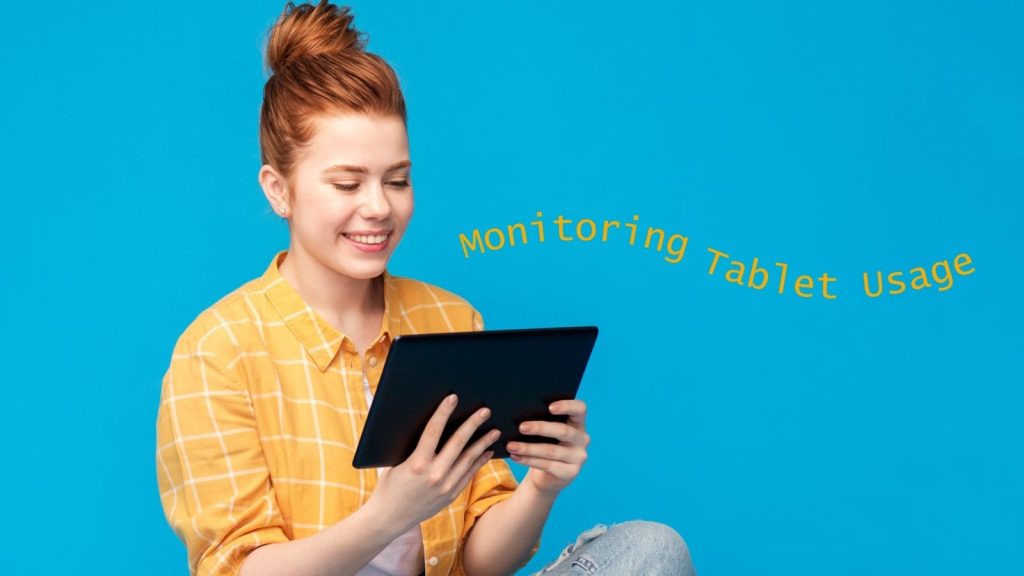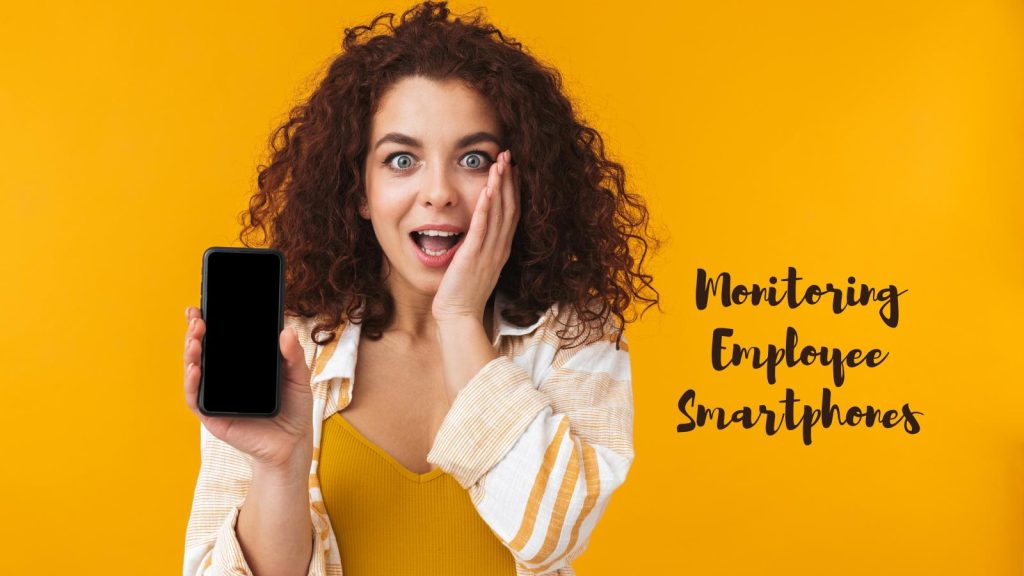In today’s fast-paced digital world, insightful employee monitoring of smartphones and tablets has become vital for businesses. With the majority of work-related communication and tasks being conducted on these devices, employers are seeking effective ways to ensure productivity, security, and compliance within their businesses.
In this blog post, I will explore the importance of implementing employee monitoring for smartphones and tablets and the benefits it can bring to your business.
Table of Contents
The Importance of Employee Monitoring in the Digital Age
In today’s digital age, employee monitoring has become increasingly crucial for businesses to ensure productivity, security, and compliance.
Understanding the need for smartphone and tablet monitoring and considering the legal and ethical implications is crucial to implementing an effective monitoring strategy.
Understanding the Need for Smartphone and Tablet Monitoring
Smartphones and tablets have become integral to our work lives, allowing employees to work remotely and stay connected.
However, these devices also present potential distractions and security risks. Employee monitoring of smartphones and tablets can provide insights into how your employees utilize these devices for work-related activities.
This ensures that productivity remains high and potential security threats are reduced.
Legal and Ethical Considerations in Employee Monitoring
While monitoring employee devices can provide valuable insights, businesses must navigate the legal and ethical considerations of employee privacy. Establishing clear policies and communicating openly with employees about the purpose of monitoring is essential.
By maintaining transparency and aligning monitoring practices with legal regulations and ethical standards, businesses can foster a culture of trust while safeguarding their interests.
In the digital age, balancing monitoring and respecting employee privacy rights is a complex but necessary endeavor for businesses.
By understanding the significance of smartphone and tablet monitoring and addressing legal and ethical considerations, businesses can effectively harness the benefits of employee monitoring while upholding transparency and trust in the workplace.
Benefits of Insightful Employee Monitoring
In today’s dynamic work environment, insightful employee monitoring of smartphones and tablets brings numerous benefits for both employers and employees.
Enhanced Productivity and Efficiency
Insightful employee monitoring allows employers to gain valuable insights into their employees’ work patterns and efficiency levels.
By analyzing the data gathered from monitoring, managers can identify ways to streamline workflows, eliminate time-wasting activities, and allocate resources more effectively.
This level of insight can lead to a significant boost in overall productivity within your business.
Mitigating Security Risks and Data Breaches
One key advantage of employee monitoring is the ability to proactively address security risks and prevent potential data breaches.
By monitoring the usage of company-issued smartphones and tablets, you can detect and address any suspicious activities or unauthorized access to sensitive information.
This proactive approach safeguards the organization’s data and helps maintain compliance with data protection regulations.
Identifying Training and Support Needs
Insightful employee monitoring allows you to identify areas where employees may require additional training or support.
By analyzing the usage patterns and performance metrics, you can pinpoint specific skill gaps or technological challenges employees may encounter. This allows for targeted training programs and support initiatives to be implemented, ultimately enhancing the overall competency and confidence of the workforce.
The insightful monitoring of employee smartphones and tablets has various benefits, including a more efficient, secure, and supportive work environment.
What Is The Best Practice For Employee Monitoring of smartphones and Tablets?
Navigating the complexities of employee smartphone and tablet monitoring requires the implementation of effective strategies.
You can ensure a transparent and secure monitoring process by utilizing monitoring software and tools, establishing clear monitoring policies and guidelines, and balancing privacy and security concerns.

Utilizing Monitoring Software and Tools
Incorporating advanced monitoring software and tools empowers you and other employers to effectively oversee employee smartphone and tablet usage.
These tools offer real-time activity tracking, application usage monitoring, and content filtering, enabling businesses to view device activities comprehensively.
Leveraging such software can provide insights into productivity levels, identify potential security risks, and ensure adherence to company policies.
The Best Apps For Insightful Employee Monitoring
Regarding monitoring employee smartphones, SpyStealth is one of the best apps available. This app allows you to track and monitor your employees’ smartphone activities, including call logs, text messages, social media usage, and GPS location.
With SpyStealth, you can gain valuable insights into your employees’ behavior and ensure they use their company-issued devices responsibly. In addition to SpyStealth, other apps, such as Xnspy, Mobistealth, and FlexiSPY, offer similar monitoring features.
These apps can help you maintain productivity and security in the workplace by monitoring your employees’ smartphone usage.
Establishing Clear Monitoring Policies and Guidelines
Establishing clear and comprehensive monitoring policies and guidelines is essential to aligning employee expectations with monitoring practices.
Businesses can make a transparent and accountable monitoring environment by clearly outlining the permissible uses of company-provided devices, describing privacy boundaries, and communicating the consequences of policy violations.
Furthermore, providing employees with a thorough understanding of the monitoring process cultivates a work culture that prioritizes responsibility and professionalism.
Balancing Privacy and Security Concerns
Achieving a harmonious balance between privacy and security concerns is paramount in employee smartphone and tablet monitoring. Businesses should prioritize implementing monitoring methods that prioritize data security while respecting employees’ privacy rights.
You can achieve this balance by deploying encryption measures, anonymizing personal data, and ensuring monitoring practices strictly adhere to relevant laws and regulations. By striking this balance, your business can safeguard sensitive information while upholding employee privacy rights.
Implementing Employee Monitoring Responsibly
Before implementing employee monitoring, it is essential to lay the groundwork for a transparent and supportive environment. Communicating the purpose and benefits of monitoring allows employees to understand how it contributes to productivity, security, and compliance.
This clarity fosters an atmosphere of trust between employers and employees. Providing training and support for employees ensures that they comprehend the purpose and functionality of monitoring tools.
Addressing privacy concerns openly and transparently allows employees to voice their worries and ensures their privacy is respected. Building trust is crucial, as is balancing oversight and respecting employees’ autonomy and privacy rights.
Conclusion: Insightful Employee Monitoring
In conclusion, implementing insightful employee monitoring of smartphones and tablets is essential for maintaining productivity, ensuring data security, and promoting responsible device usage within your business.
Using advanced monitoring tools, you can gain valuable insights into your employees’ activities, identify potential security risks, and foster a culture of accountability.
Embracing this proactive approach allows businesses to establish clear policies, mitigate risks, and ultimately streamline operations for long-term success.
Have you used any monitoring tools like these for your small business? I’d love to hear more about it in the comments below.
(Years ago, I was monitored using a company phone as an employee. We would get charged for any extra time the phone was used.)
Insightful Employee Smartphone Monitoring: Best Practices & Key Questions
What’s the primary purpose of employee smartphone monitoring?
Businesses use smartphone monitoring to track work activities, protect company data, and spot misuse. It also helps verify how and when employees use devices for work.
Is it legal to monitor employees’ smartphones?
Yes, but only under certain conditions. Employers must follow privacy laws, inform staff, and often get consent. Laws differ by country and region, so check local rules first.
What features do monitoring apps usually offer?
Top apps show call logs, messages, web history, app usage, and GPS data, and they can block risky content. Some also allow remote device control or an alert for set keywords.
How can small businesses respect privacy while monitoring?
Set clear policies. Only monitor work-related activities. Avoid tracking personal apps and conversations. Let employees know exactly what’s observed.
Are company-owned and personal devices treated differently?
Yes. It’s easier to fully monitor company-owned phones. Monitoring personal devices used for work, or BYOD, is more limited due to privacy laws. Always stick to work-related information.
What are the best ways to inform staff about monitoring?
Always use written policies. Hold a meeting to explain what’s monitored and why. Answer questions to build trust. Give staff a copy of the policy.
How can monitoring boost productivity?
It helps identify distractions, misuse, or wasted time and highlights top performers. Sharing data can help staff improve by showing where to focus.
What risks come with employee smartphone monitoring?
Poorly managed monitoring can damage trust, lead to privacy complaints, or even legal trouble. Over-monitoring can lower morale and cause stress if not handled with care.
How do you choose the proper monitoring solution for a small business?
Look for tools that fit your company size, budget, and goals. Pick apps with strong support, simple dashboards, and clear privacy options. Trial versions can help with testing before committing.
How should small business owners handle sensitive data collected by monitoring?
Limit access to only those who need it. Keep data secure with strong passwords and encryption. Delete old or unnecessary data. Always inform employees about data handling practices.
Can monitoring be turned off outside work hours?
Yes, and it’s wise to do so. Many tools let you set schedules. This respects personal time and helps you avoid privacy issues.
Should employees be able to see their data?
Letting staff review their data builds trust and openness. Some solutions offer employee dashboards to view their history and correct errors. This reduces misunderstandings.




